South African: Seriously assuring
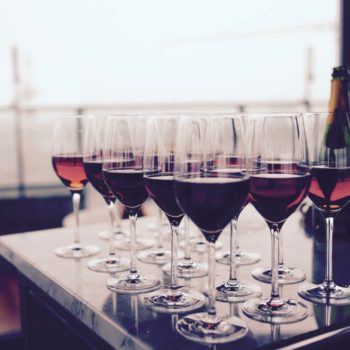
From humble beginnings, South Africa’s wine industry has rightly won a hard-earned place on the global fine wine map. Nowadays, there is a palpable buzz surrounding South Africa and the variants produced in its lush winelands
11 October 2016
AT A GLANCE: South African wines
Wines of South Africa (www.wosa.co.za) has compiled a comprehensive overview of key stats for the country’s wine industry
- Currently 98,597 hectares of vines producing wine grapes are under cultivation in South Africa over an area some 800 kilometres in length. White varieties constitute 54.6% of the plantings for wine, with Chenin Blanc comprising 18.2% of the total. Red wine varieties account for 45.4% of the national vineyard. The most widely planted red variety is Cabernet Sauvignon, accounting for 11.3% of the total. Shiraz accounts for 10.5%, while Merlot accounts for 6% and Pinotage, which is indigenous to South Africa, represents 7.5%. The local wine industry continues to re-align its vineyard offering in line with international trends.
- According to a study, commissioned by the SA Wine Industry Information & Systems (SAWIS) and published in January 2015, some 300,000 people were employed both directly and indirectly in the wine industry in 2015, including farm labourers, those involved in packaging, retailing and wine tourism. The study also concluded that of the R36.1 billion gross domestic product (GDP) contributed by the wine industry to the regional economy, about R19.3 billion eventually would remain in the Western Cape to the benefit of its residents.
- Growth in contribution to the GDP has been at least 10% per annum since 2003.
- In terms of world wine production, South Africa ranks as number eight in overall volume production of wine and produces 4.1% of the world’s wine (2015).
- Of the country’s total annual harvest of 1,154m litres in 2015, 83.9% was devoted to the making of wine, 3.6% to wine for brandy, 9.8% to distilling wine and 2.7% to grape juice concentrate and grape juice.
- Exports of natural (i.e. non-fortified) packaged wines for the 2015 calendar year reached 167.5m litres, a decrease of 3.4% on the previous year. Red wine exports increased by 1.5% to account for 41.4% of all natural wines exported.
- Total exports of wine decreased by 0.6% to 420m litres in 2015.
From a global perspective, South Africa ranks as number eight in the overall volume production of wine and produces 4.1% of the world’s wine (2015). According to fine wine distributor Berry Bros. & Rudd, it has taken nearly 20 years for the South African wine trade to become the exciting place it is today. The once widespread production of inexpensive, inferior wines has made way for smaller volumes and higher-quality wines, partly via the rise of maverick winemakers. This trend has firmly planted South Africa on the global fine wine map. Wines of South Africa (WoSA) reports white varieties constitute 54.6% of the country’s plantings for wine, with Chenin Blanc comprising 18.2% of the total. The most widely planted red variety is Cabernet Sauvignon, accounting for 11.3% of the total, with Shiraz (10.5%), Merlot (6%) and Pinotage (7.5%) also heavy-hitters.
In fact, according to Wines of South Africa, South African wine has a history dating back to 1659 with Constantia, a vineyard near Cape Town, being considered one of the greatest wine producers in the world.
Nowadays, production is concentrated around Cape Town, with major vineyard and production centres at Paarl, Stellenbosch and Worcester. In total, there are some 60 appellations within the Wine of Origin (WO) system. This initiative was first put into practice in 1973 with a hierarchy of designated production regions, districts and wards.
The WO system reassures buyers and consumers about where the grapes used in their favourite South African wines come from. The definition means WO wines must be made 100% from grapes from the designated area. What’s more, ‘single vineyard’ wines must come from a defined area of less than five hectares. An ‘Estate Wine’ meanwhile, can come from adjacent farms, as long as they are farmed together and wine is produced on site. A ward is an area with a distinctive soil type or climate, and is roughly equivalent to a European appellation.
Climate conditions
WoSA provides a rich, enticing picture of the climate conditions which enable vineyards to thrive. “The Cape winelands stretch from the rugged mountains and multi-directional slopes of the coastal region to the open plains of the Klein Karoo where viticulture takes place mainly in the riverine valleys,” WoSA explains. “South Africa’s vineyards are mostly situated in the Western Cape near the coast. Rainfall on the coastal side, where fynbos and renosterveld vegetation flourish, measures up to 1,000 mm per year. Travel over the mountains into the hinterland and the rainfall decreases dramatically with the vegetation dominated by hardy succulents, cycads and aloes. Currently around 98,597 hectares of vines producing wine grapes are under cultivation over an area some 800 km in length.”
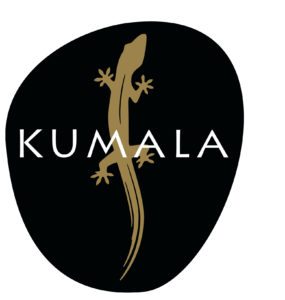
Kumala’s chief winemaker Ben Jordaan has worked in many of the major wine producing regions in the world
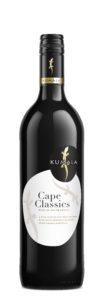
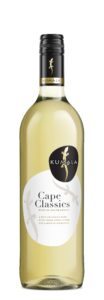 Under the WO scheme, there are six regions in the geographical unit of the Western Cape. Namely, Breede River Valley, Cape South Coast, Coastal Region, Klein Karoo, Olifants River and Boberg (used for fortified wines from Paarl, Franschhoek, Wellington and Tulbagh). These encompass 26 diverse districts and some 69 smaller wards. Another four geographical units exist: KwaZulu-Natal; Northern Cape (which includes the production areas Hartswater (ward), Douglas (district), Central Orange River (ward), Rietrivier FS (ward) and Sutherland Karoo (district); Eastern Cape, which includes the production area St Francis Bay (ward) and Limpopo.
Under the WO scheme, there are six regions in the geographical unit of the Western Cape. Namely, Breede River Valley, Cape South Coast, Coastal Region, Klein Karoo, Olifants River and Boberg (used for fortified wines from Paarl, Franschhoek, Wellington and Tulbagh). These encompass 26 diverse districts and some 69 smaller wards. Another four geographical units exist: KwaZulu-Natal; Northern Cape (which includes the production areas Hartswater (ward), Douglas (district), Central Orange River (ward), Rietrivier FS (ward) and Sutherland Karoo (district); Eastern Cape, which includes the production area St Francis Bay (ward) and Limpopo.
Depth of knowledge shines through
Surrounding South Africa’s legendary Table Mountain is a place of lush fertility and natural beauty. This is the home of Kumala, where wines that are full of character and taste are made. The brand states the best available fruits are sourced by Kumala growers. These grapes can be found dotted all over the five main regions of South Africa’s wine producing land. The vineyards where these grapes are sourced are located all over the Western Cape from Olifants River, through Paarl and Stellenbosch to Worcester.
Ben Jordaan, the chief winemaker, brings talent, experience and enthusiasm to Kumala. He has worked in many of the major wine producing regions in the world and his depth of knowledge of wines shines through in every bottle of Kumala.
The South African Premier Cru
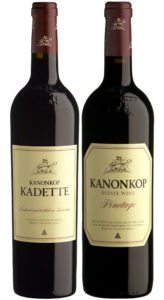
Kanonkop is lauded for its traditional winemaking techniques
Kanonkop Estate is one of the most esteemed and respected wineries in South Africa and has been regularly described by those in the know as being the South African equivalent of a ‘Premier Cru’ or ‘First Growth’.
Famous for being one of the first producers to grow and vinify Pinotage, now the country’s signature grape variety, Kanonkop is also lauded for its very traditional winemaking techniques, from unirrigated bush vines in the vineyard to small open top fermenters and minimalist intervention in the winery.
Incumbent winemaker, Abrie Beeslaar, has twice won the esteemed title of IWSC International Winemaker of the Year award – first in 2008 and more recently in 2015 – and he is only the third winemaker to head up Kanonkop since it was founded in 1973, having taken over from legendary predecessor and so-called ‘king of pinotage’ Beyers Truter.
All of Kanonkop’s wines are fermented in wide, open-top concrete vats which allow for maximum skin contact and extraction from the grapes. The wines are then aged, bottled, labeled and cellared on site.
Exclusively available in Ireland via Findlater Wine & Spirit Group is Kanonkop Kadette, the brand’s acclaimed red blend and perhaps the best-value South African wine available; Kanonkop Pinotage, an iconic take on what has become South Africa’s national grape; Kanonkop Cabernet Sauvignon, a rich South African expression of the ‘King of Grapes’; and Kanonkop Paul Sauer, a flagship ‘Bordeaux Blend’ of Cabernet Sauvignon, Cabernet Franc and Merlot.
Kanonkop means ‘Cannon Hill’ and takes its name from the hills, or kopje in Afrikaans, which surround the area. Seventeenth century cannons were found around the slopes and traced their history back to when they were fired to signal the arrival of Dutch trade ships into Cape Town harbour.



 Print
Print


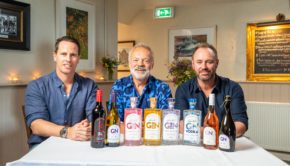


Fans 0
Followers